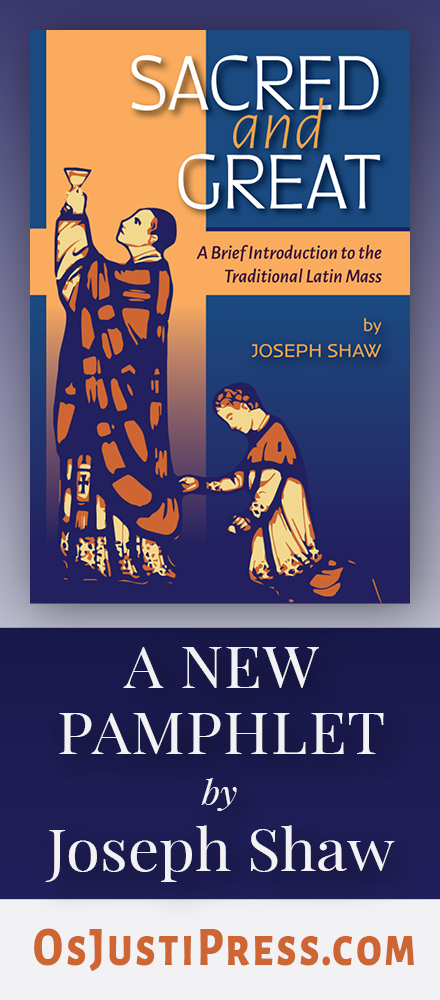Here is a resource which I prepared to help Peter with something he is researching, which you may find useful or interesting. This table shows the Gospels of the Sundays after Pentecost as they are arranged in the lectionary of Murbach, the second oldest of the Roman Rite (ca. 800 AD), and how they correspond to those in the Missal of St Pius V. A more detailed explanation is given below. (Click to enlarge.)
The oldest lectionary of the Roman Rite, a manuscript now in Wurzburg, Germany, dates to ca. 700 AD, and represents the system used at Rome about 50 years earlier. It has a very disorganized and incomplete set of readings for the period after Pentecost; the Sundays are counted as 2 after Pentecost, 7 after the feast of Ss Peter and Paul, 5 after that of St Lawrence, and 6 after St Cyprian, a total of only 20. (This predates the institution of the Exaltation of the Cross in the West, so the feast of St Cyprian was kept on the day of his death, September 14th; it is now on the 16th.)
The Murbach lectionary dates to about 100 years later, and represents the Roman Rite as used in Gaul after Charlemagne had introduced it to replace the Gallican Rite. It is much better organized and more complete than the Wurzburg manuscript, with 25 Sundays “after Pentecost.” The order of Sunday Gospels after Pentecost is similar to that of Wurzburg, but obviously several adjustments had to be made.
Rome itself also took the older tradition represented by the Wurzburg ms., re-organized it, and completed it, but not in exactly the same way as had been done in Carolingian Gaul; the order of the pericopes is also similar to that of the Wurzburg ms. This is the order which will be carried into the Missal of the Roman Curia, as attested in the Ordinal of Innocent III (1198-1216), and from there to the Missal of St Pius V.
In the table above, the second column lists the Sundays after Pentecost, the third lists the Gospels for those Sundays in Murbach, and the fourth those in the Missal of St Pius V. Each Gospel in the Murbach column has a red Roman numeral next to it, which shows which Sunday it is assigned to in the Missal of St Pius V. The exceptions are those of the 1st, 2nd and 19th Sundays, whose Gospels have no correspondent in the Roman Missal in the season after Pentecost. The first of these is the Gospel of Nicodemus, about which I have written previously. The second is the Gospel of Dives and Lazarus; in the Missal of St Pius V, this is read on the Thursday of the second week of Lent. The tradition represented by Murbach continued in use throughout the Middle Ages, and corresponds quite closely to the order of readings found in the Use of Sarum, among others.
The first column indicates where the Murbach Gospels are found in Wurzburg; a blank space means that the Murbach Gospel for that Sunday is not found in Wurzburg at all. A peculiarity of the Wurzburg system is that the Gospel of the Good Samaritan (Luke 10, 23-37) is assigned to both the sixth Sunday after Ss Peter and Paul, and the second after St Lawrence. The revision of the tradition in Murbach kept it in a position which corresponds to the second of these two, necessitating the choice of another pericope to fill the gap among those formerly counted after Ss Peter and Paul.
All in all, what the table shows is that, with certain adjustments, the Gospels found in the Missal of St Pius V correspond quite closely, both in selection and order, with those found in the two oldest lectionaries of the Roman Rite.
The Epistle series for the same period requires the tabulation of a slightly different body of material; I plan on posting this fairly soon.
The oldest lectionary of the Roman Rite, a manuscript now in Wurzburg, Germany, dates to ca. 700 AD, and represents the system used at Rome about 50 years earlier. It has a very disorganized and incomplete set of readings for the period after Pentecost; the Sundays are counted as 2 after Pentecost, 7 after the feast of Ss Peter and Paul, 5 after that of St Lawrence, and 6 after St Cyprian, a total of only 20. (This predates the institution of the Exaltation of the Cross in the West, so the feast of St Cyprian was kept on the day of his death, September 14th; it is now on the 16th.)
The Murbach lectionary dates to about 100 years later, and represents the Roman Rite as used in Gaul after Charlemagne had introduced it to replace the Gallican Rite. It is much better organized and more complete than the Wurzburg manuscript, with 25 Sundays “after Pentecost.” The order of Sunday Gospels after Pentecost is similar to that of Wurzburg, but obviously several adjustments had to be made.
Rome itself also took the older tradition represented by the Wurzburg ms., re-organized it, and completed it, but not in exactly the same way as had been done in Carolingian Gaul; the order of the pericopes is also similar to that of the Wurzburg ms. This is the order which will be carried into the Missal of the Roman Curia, as attested in the Ordinal of Innocent III (1198-1216), and from there to the Missal of St Pius V.
In the table above, the second column lists the Sundays after Pentecost, the third lists the Gospels for those Sundays in Murbach, and the fourth those in the Missal of St Pius V. Each Gospel in the Murbach column has a red Roman numeral next to it, which shows which Sunday it is assigned to in the Missal of St Pius V. The exceptions are those of the 1st, 2nd and 19th Sundays, whose Gospels have no correspondent in the Roman Missal in the season after Pentecost. The first of these is the Gospel of Nicodemus, about which I have written previously. The second is the Gospel of Dives and Lazarus; in the Missal of St Pius V, this is read on the Thursday of the second week of Lent. The tradition represented by Murbach continued in use throughout the Middle Ages, and corresponds quite closely to the order of readings found in the Use of Sarum, among others.
The first column indicates where the Murbach Gospels are found in Wurzburg; a blank space means that the Murbach Gospel for that Sunday is not found in Wurzburg at all. A peculiarity of the Wurzburg system is that the Gospel of the Good Samaritan (Luke 10, 23-37) is assigned to both the sixth Sunday after Ss Peter and Paul, and the second after St Lawrence. The revision of the tradition in Murbach kept it in a position which corresponds to the second of these two, necessitating the choice of another pericope to fill the gap among those formerly counted after Ss Peter and Paul.
All in all, what the table shows is that, with certain adjustments, the Gospels found in the Missal of St Pius V correspond quite closely, both in selection and order, with those found in the two oldest lectionaries of the Roman Rite.
The Epistle series for the same period requires the tabulation of a slightly different body of material; I plan on posting this fairly soon.





















